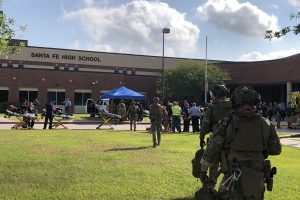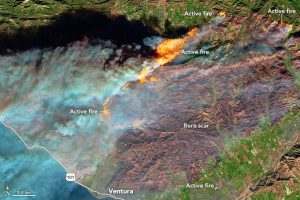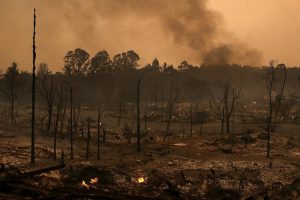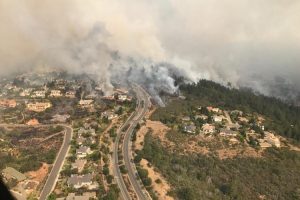After producing catastrophic flooding which brought 30-plus inches of rain to parts of southeast Texas, Tropical Storm Harvey is set to bring continued rain to Louisiana as well.
Tropical Storm Harvey made its third landfall near Cameron, Louisiana early on August 30th as it moves northeast towards Mississippi and Tennessee. The National Weather Service office in New Orleans forecasts that southeast Louisiana and southern Mississippi could see rainfall of 5 to 10 inches, with isolated spots possibly receiving higher amounts. Rain and flooding concerns extend through the week.
Fourteen people have died in Texas so far during the storm; over 2,000 people have been rescued by Houston and other emergency personnel since the storm’s onset. Texas Governor Abbott called Harvey “one of the largest disasters America has ever faced.”
Coming ashore originally as a Category 4 hurricane, Harvey brought up to 51.88 inches of rain to the Texas area, setting a new tropical cyclone rainfall record for the contiguous United States.
After producing catastrophic flooding which brought 30-plus inches of rain to parts of southeast Texas, Tropical Storm Harvey is set to bring continued rain to Louisiana as well.
Tropical Storm Harvey made its third landfall near Cameron, Louisiana early on August 30th as it moves northeast towards Mississippi and Tennessee. The National Weather Service office in New Orleans forecasts that southeast Louisiana and southern Mississippi could see rainfall of 5 to 10 inches, with isolated spots possibly receiving higher amounts. Rain and flooding concerns extend through the week.
Fourteen people have died in Texas so far during the storm; over 2,000 people have been rescued by Houston and other emergency personnel since the storm’s onset. Texas Governor Abbott called Harvey “one of the largest disasters America has ever faced.”
Coming ashore originally as a Category 4 hurricane, Harvey brought up to 51.88 inches of rain to the Texas area, setting a new tropical cyclone rainfall record for the contiguous United States.
A flash flood watch remains in effect through Thursday for much of the southeast Louisiana/southern Mississippi area.
President Trump on Monday approved an emergency declaration for Louisiana, allowing the Department of Homeland Security and the Federal Emergency Management Agencies to coordinate disaster relief efforts.
https://twitter.com/NWSNewOrleans/status/902366098611372034
New Orleans is already on edge after failures in the city’s drainage pumping system contributed to flooding on August 5th; 17 pumps to remove water from the city were out of commission. The city’s Sewerage and Water Board reported Monday evening that 13 of the city’s 120 pumps still remain out of service.
The Sewerage and Water Board says the city’s pump system is designed to drain 50,891 cubic feet of water per second when operating at full capacity. The City of New Orleans is built below sea level, surrounded almost completely by water with lake Pontchartrain on the north, Lake Borgne to the east, and the Mississippi River to the south. Large parts of the city infamously flooded in 2005 during Hurricane Katrina.







